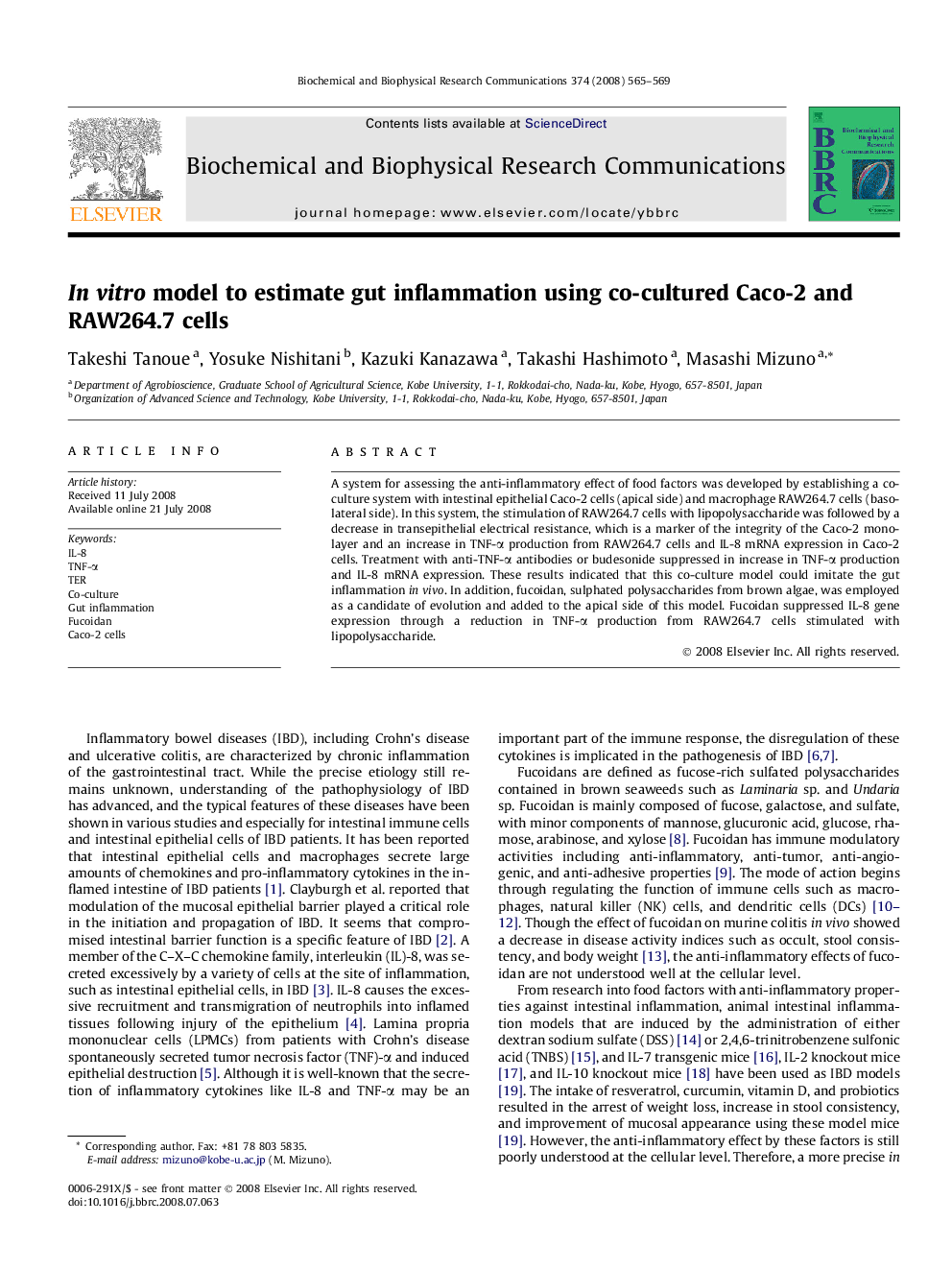| Article ID | Journal | Published Year | Pages | File Type |
|---|---|---|---|---|
| 1935461 | Biochemical and Biophysical Research Communications | 2008 | 5 Pages |
A system for assessing the anti-inflammatory effect of food factors was developed by establishing a co-culture system with intestinal epithelial Caco-2 cells (apical side) and macrophage RAW264.7 cells (basolateral side). In this system, the stimulation of RAW264.7 cells with lipopolysaccharide was followed by a decrease in transepithelial electrical resistance, which is a marker of the integrity of the Caco-2 monolayer and an increase in TNF-α production from RAW264.7 cells and IL-8 mRNA expression in Caco-2 cells. Treatment with anti-TNF-α antibodies or budesonide suppressed in increase in TNF-α production and IL-8 mRNA expression. These results indicated that this co-culture model could imitate the gut inflammation in vivo. In addition, fucoidan, sulphated polysaccharides from brown algae, was employed as a candidate of evolution and added to the apical side of this model. Fucoidan suppressed IL-8 gene expression through a reduction in TNF-α production from RAW264.7 cells stimulated with lipopolysaccharide.
